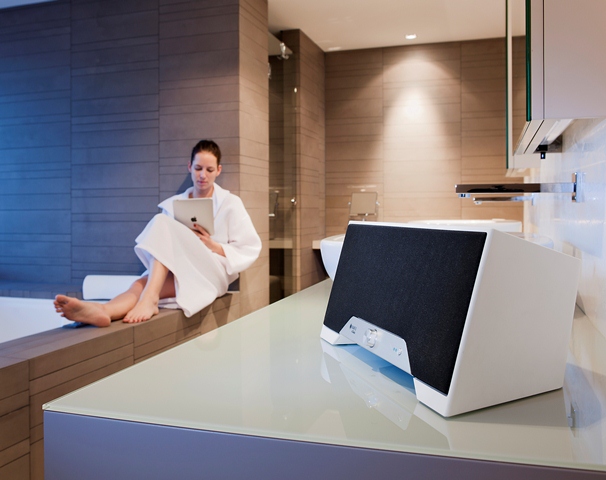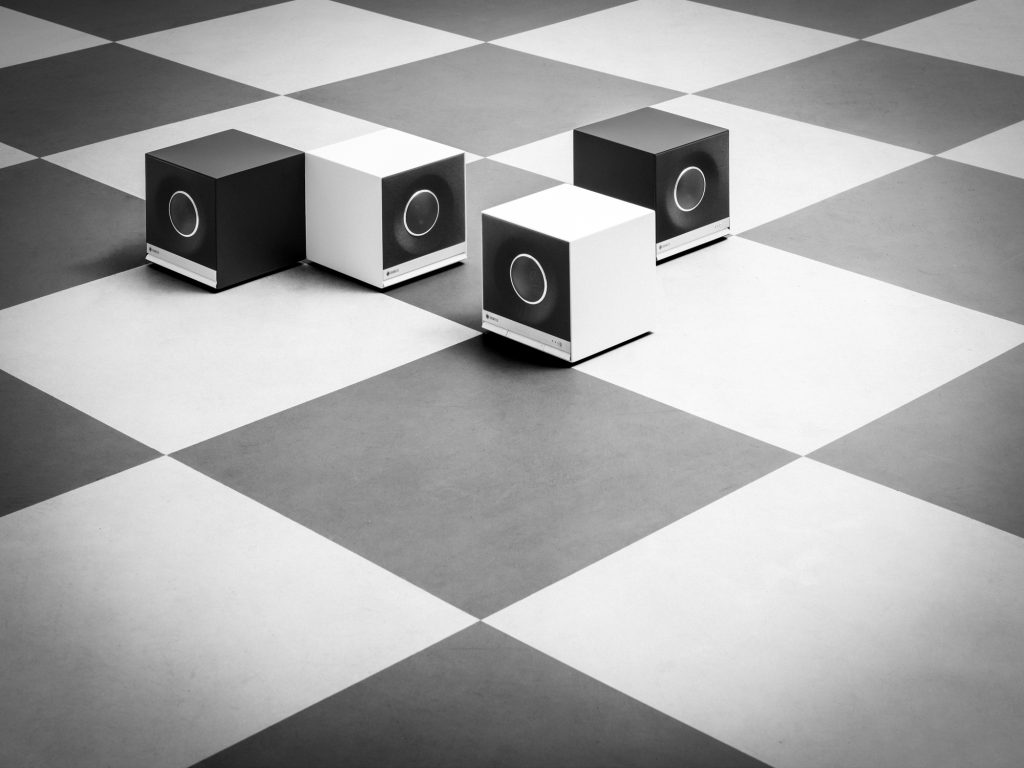The use of smartphones and tablets in just about every household has uprooted media systems from fixed places in living rooms and at computer desks. Today, people expect to be able to access any and all types of media from movies and pictures to music and games in any room in their home, at any time. This has created a challenge for audio manufacturers: They need to create audio systems that meet the demand for greater media mobility and flexibility. One of the solutions that has been developed in recent years is multi-room streaming.
What is multi-room streaming?
A multi-room system refers to a network of loudspeakers that are distributed in more than one room and which are controlled by a central system. While it would be possible to connect loudspeakers located in various rooms via cable, the terms “multi-room” is almost always used to denote a system connected via computer network. The networking of the loudspeakers can take place via Wi-Fi or LAN. Wi-Fi connections have the advantage that they enable a wireless connection between speakers in different rooms.

Multi-room streamingOpens in new tab systems usually feature decentralized controls, i.e. they can be managed from wherever you happen to be since the control device and playback devices are all part of the same network. Just about any mobile device can be transformed into a multi-room control by simply downloading a free app. The control app supplies the multi-room user with all of the information required regarding the system’s status – what’s playing at the moment and where – and offers the ability to select different tracks as well as to assign them to particular speakers.
The wireless transmission of audio files has come to be known as streaming, and this transmission is alwas conducted digitally. The first step in the process involves copying the track or part of the track from its original storage place on a media server or mobile device to the internal storage of the streaming-enabled loudspeaker. At this stage in the streaming process, each of these special loudspeakers functions like a mini computer. The digital music file is received and saved until it can be transformed from a digital to an analogue signal. Only in this form can the audio file be converted into vibrations within the loudspeaker’s voice coil, vibrations that are then expressed as sound via the loudspeaker drivers’ membrane.
The basic physical foundation of sound reproduction is the same in all speakers, including streaming speakers: The audio signal is converted into electric current that is passed through a voice coil which creates an electromagnetic field that alternately pushes and pulls the speaker cone away from a stationary magnet. This causes air in front of the cone to vibrate in wave form, thus creating sound.
The ability of this process to create high-quality sound depends very much on the audio signal. The quality of the audio signal, in turn, depends on the following:
- The quality of the audio file: While it’s amazing what a good multi-room system can do, it will, ultimately, not be capable of magic. This means that it will be impossible to do transform a low resolution track or one that has been mastered for high sound levels into pleasant-sounding and dynamic music. Back in the days when computer storage was expensive and portable sound systems employed only primitive ear buds, it frankly didn’t matter whether one listened to highly compressed MP3 files or audiophile-grade digital recordings. On a pair of high-end stereo streaming speakers, however, differences in audio quality will be apparent. When downloading tracks or converting music, it is therefore best to opt for higher-resolution, lossless formats as these will produce noticeably better playback.
- The sampling rate of the digital-to-analogue converters used (technically D/A converters or DACs): A DAC is a small component that is finding its way into ever more devices. A DAC converts digital signals into acoustic (i.e. analogue) signals, a process that is necessary for every mobile phone ring tone or MP3 file. CD players also make use of DACs. The deciding factor for sound is the resolution at which a DAC is able to convert a digital signal into an acoustic signal. Raumfeld, for instance, uses a high-end DAC from the brand Cirrus which supports a resolution up to 24 bit/192 kHz – a very high resolution for a streaming device and one that supports audiophile-grade music files.
An additional advantage to computer-based networks is that a multi-room audio system organized according to this principle interfaces with home networks and the Internet. This makes it easy to play music from internet radio stations and streaming services for access to the world’s music.
In addition, many streaming loudspeakers offer access to older playback technology in the form of a line in. This allows existing stereo systems to be integrated into the multi-room setup so that you can have the best of both worlds.
Expanding and customizing your sound with multi-room
Not everyone interested in multi-room systems wants to equip every room in his or her home for sound right away, and it’s not necessary to do so. The wonderful thing about multi-room systems is that they can be implemented in a series of steps. It’s therefore possible to begin your multi-room setup with the purchase of a single streaming loudspeaker. This is not only financially easier than paying for a larger system all at once, but will give you time to learn about the technology and its possibilities. Then, when you do decide to expand, you can concentrate on the acoustic aspects of the system instead of the technical details. Thanks to its modular nature and user friendly controls, an extension of the system can be easily achieved.
Multi-room: The ultimate in flexible playback in one or more rooms
Once a multi-room system  has been installed in a household, it offers nearly unlimited playback possibilities. Modular expandability and firmware updates effectively future-proof the system against not only technological changes, but also your own whims and desires. You can also count on the handy app that controls the system to be available on all of the most popular hand-held devices for easy control of your music streams wherever you happen to be in your home.
has been installed in a household, it offers nearly unlimited playback possibilities. Modular expandability and firmware updates effectively future-proof the system against not only technological changes, but also your own whims and desires. You can also count on the handy app that controls the system to be available on all of the most popular hand-held devices for easy control of your music streams wherever you happen to be in your home.
The advantages of multi-room streaming at a glance:
- Quick setup thanks to fewer cables
- Easy installation involving a single initial implementation for the entire system
- Decentralized control via free app for existing handheld devices
- Ability to access media anywhere and at any time in your home
- Ability to regulate sound in each room seperately (volume, bass, highs)
- Access to all music in your personal library and on the Internet
- Easy expandability




